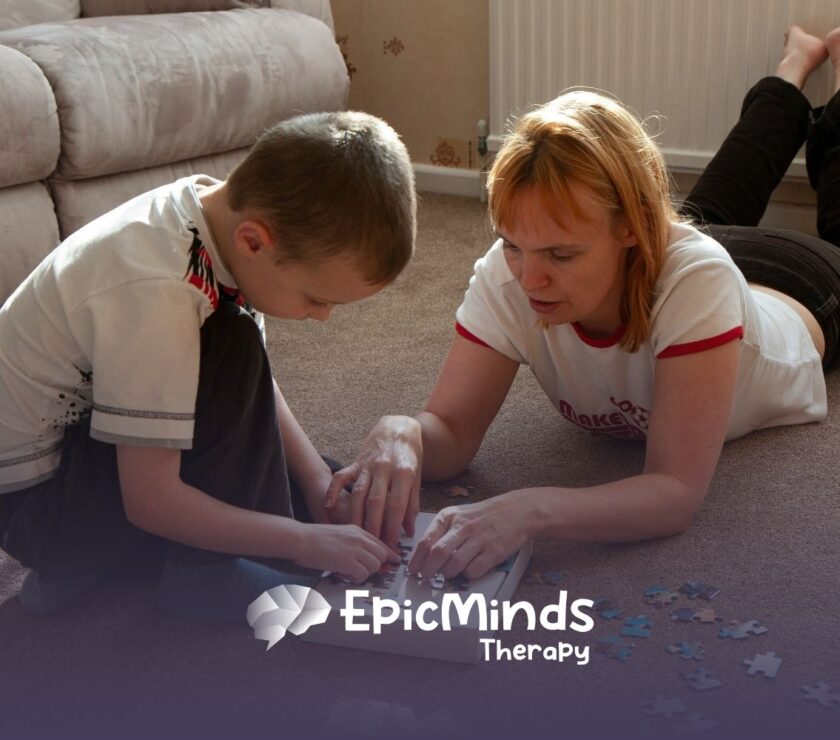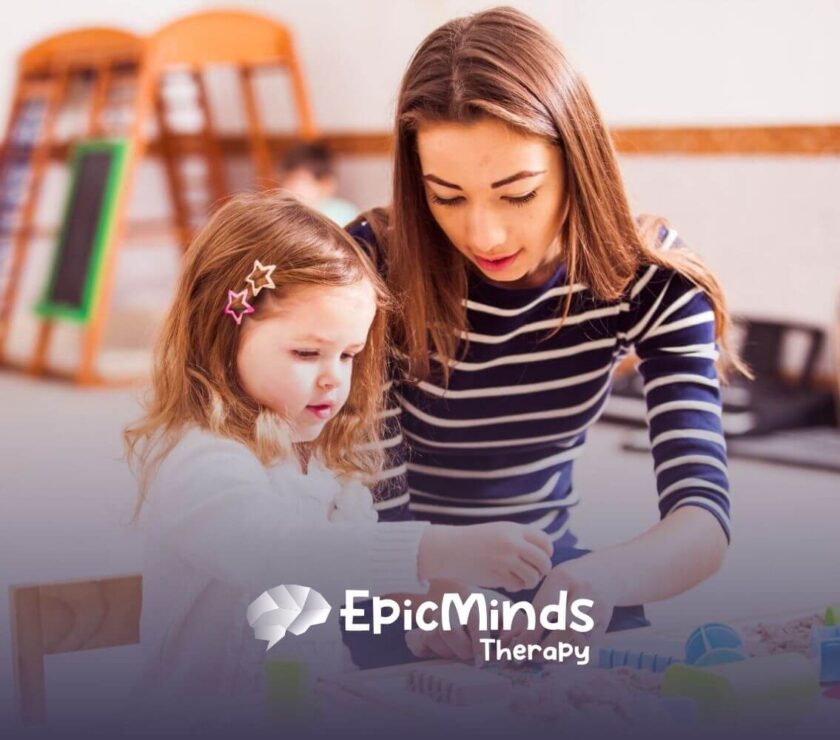Key Highlights
- Applied Behavior Analysis (ABA) therapy uses evidence-based techniques to help children, especially those on the autism spectrum, develop social, communication, and learning skills.
- ABA therapy includes structured methods like Discrete Trial Training and more natural approaches like Natural Environment Teaching.
- Techniques like positive reinforcement and individualized treatment plans are designed to address each child’s unique needs.
- ABA therapy supports children in a variety of developmental areas, such as adaptive skills and language proficiency.
- Parents and behavior analysts play an essential role in tracking progress and ensuring the therapy aligns with each child’s specific goals.
Have you ever wondered which type of ABA therapy could help your child the most? Understanding the various approaches to Applied Behavior Analysis (ABA) therapy is essential for ensuring that your child gets the personalized care they need. Whether it’s focusing on communication skills, reducing problematic behaviors, or improving social interactions, ABA offers a flexible approach that adapts to your child’s goals.
I recall a client whose child was initially nonverbal, and we were unsure of the best therapy path. After trying different approaches in home-based ABA therapy, we found that Natural Environment Teaching (NET) worked wonders. It allowed the child to learn communication skills in a more organic setting—at home and during everyday interactions.
The results were incredible, and it truly reinforced the importance of finding the right fit for each child.
How ABA Therapy Is Structured
ABA therapy is carefully tailored to fit the individual needs of each child. The process usually starts with an assessment conducted by a certified behavior analyst. They will evaluate various areas, such as communication and social skills, to identify the child’s strengths and areas for improvement.
After the assessment, a treatment plan is created. This plan outlines specific ABA programs and techniques designed to help the child learn new behaviors and skills.
Therapy can take place in various settings, including at home, school, or other familiar environments. The goal is for children to build skills that will help them navigate everyday situations successfully.
Assessment and Individualized Planning
The first step in any ABA therapy is assessment. During this phase, behavior analysts work with the child and their family to identify key areas for development. Parents often provide valuable insights into their child’s day-to-day activities, challenges, and preferences.
Once the assessment is complete, an individualized treatment plan is developed. The plan is customized to address the child’s unique needs and may focus on areas such as communication, reducing negative behaviors, or teaching new skills.
The plan is broken down into manageable steps, making it easier for the child to make progress at their own pace. As therapy continues, the plan can be adjusted to reflect the child’s evolving needs and goals.
Monitoring Progress and Adjusting Strategies
Tracking progress is essential in ABA therapy. Behavior analysts continually assess how the child is responding to the therapy, noting improvements in areas like social interactions, language development, and overall behavior.
If certain strategies aren’t yielding the desired results, adjustments are made to ensure that the therapy remains effective.
Parents play an active role in monitoring their child’s progress, too. By staying engaged with the therapy process, parents can reinforce positive behaviors at home and offer feedback on how the child is doing.
This partnership between parents and behavior analysts helps ensure that the child’s therapy is aligned with their goals and produces the best outcomes.
Major Types of ABA Therapy for Children
ABA therapy is not a one-size-fits-all approach. There are several different techniques and methods used, depending on the child’s needs.
Below, we’ll explore the major types of ABA therapy commonly used with children.
Discrete Trial Training (DTT)
Discrete Trial Training (DTT) is one of the most structured forms of ABA therapy. In DTT, complex skills are broken down into smaller, more manageable steps. Each step is taught individually, and positive reinforcement is used to encourage the child’s progress. This method is highly structured, with clear instructions and specific goals.
DTT helps children focus on learning one skill at a time. It’s particularly effective for teaching children with autism new behaviors and skills in an organized way. Over time, DTT can help children improve their social skills and become more comfortable in various social settings.
Early Intensive Behavioral Intervention (EIBI)
Early Intensive Behavioral Intervention (EIBI) is designed specifically for young children, typically under the age of five, who have autism spectrum disorder.
This approach uses intensive therapy to target key developmental areas, such as communication, social skills, and adaptive skills. EIBI takes advantage of the child’s natural ability to learn during the early years when brain development is at its peak.
Through positive reinforcement and engaging activities, EIBI helps children build a solid foundation for future growth. The earlier the intervention, the better the outcomes for the child, making EIBI one of the most effective forms of therapy for young children with autism.
Pivotal Response Training (PRT)
Pivotal Response Training (PRT) is a more flexible and naturalistic approach to ABA therapy. In PRT, children learn skills in real-life settings, rather than in a structured classroom environment.
This method focuses on key “pivotal” behaviors, such as motivation and self-management, that impact a wide range of skills.
By working in natural environments, PRT allows children to practice social and communication skills in ways that feel more authentic and meaningful. This approach encourages children to engage with their surroundings and develop important skills in real-world situations.
Natural Environment Teaching (NET)
Natural Environment Teaching (NET) emphasizes learning through everyday activities in the child’s natural surroundings. This method uses real-life situations as opportunities for children to practice new skills, particularly in areas like communication and social interactions.
Unlike traditional ABA techniques, which often take place in structured settings, NET takes advantage of natural teaching moments. By integrating learning into everyday life, children are more likely to retain and generalize the skills they acquire.
Focused ABA vs. Comprehensive ABA
There are two main approaches to ABA therapy: Focused ABA and Comprehensive ABA. Each has its own set of advantages, depending on the child’s needs and goals.
Focused ABA
Focused ABA therapy targets specific challenges a child may face, such as social skills or problematic behaviors like tantrums. These sessions are typically shorter and more concentrated, focusing on addressing one particular issue at a time.
This method is ideal for children who may need help in a few targeted areas but are already doing well in other aspects of development. Focused ABA allows for quick, impactful changes with less intensity.
Comprehensive ABA
Comprehensive ABA therapy, on the other hand, takes a broader approach. It covers multiple developmental areas, such as communication, academic skills, and social behaviors. Comprehensive therapy requires longer therapy sessions and involves more intense intervention.
This method is most effective for children who need help with a range of skills and behaviors. Comprehensive ABA provides a more holistic approach to the child’s development, helping them succeed in multiple areas of their life.
Choosing the Right ABA Therapy for Your Child
When deciding between Focused ABA and Comprehensive ABA, it’s important to consider your child’s specific needs and goals. Consulting with a certified behavior analyst can help determine which approach is best suited for your child’s unique situation.
In some cases, a combination of both methods may be the most effective way to address your child’s needs. Regardless of the approach, the key to success is ensuring that the therapy is tailored to your child’s individual requirements.
If you’re ready to see how ABA therapy can make a difference in your child’s life, Epic Minds Therapy is here to help. Our team of certified behavior analysts specializes in personalized ABA therapy, ensuring that your child receives the care and attention they deserve.
We work closely with families to develop effective treatment plans tailored to each child’s specific needs. Reach out to us today to schedule a consultation and discover the transformative benefits of ABA therapy. Let’s work together to help your child thrive!
Frequently Asked Questions
What age is best to start ABA therapy for children?
Early intervention is key. ABA therapy is most effective when started as early as possible, particularly for children under five years old. Early intervention helps children develop communication and social skills that are critical for their overall development.
Can ABA therapy be combined with other therapies?
Yes, ABA therapy can be combined with other therapies, provided they complement each other. Behavior analysts work with families to create a plan that integrates various therapies to address different aspects of the child’s development.
How long does a typical ABA session last?
ABA sessions typically last between 1 and 3 hours, depending on the child’s needs and treatment plan. The therapist will adjust session length to ensure it remains engaging and effective for the child.
Are there any criticisms or concerns about ABA?
Some individuals criticize ABA therapy for its past focus on making children conform to societal norms. Today, however, ABA therapy places a greater emphasis on understanding and supporting the individual needs of each child. The focus is on helping children develop skills in a compassionate, respectful way.
How can parents support ABA therapy at home?
Parents can reinforce skills learned in ABA sessions by practicing them at home. By maintaining a positive environment and following the treatment plan, parents can help their children make progress and feel supported in their learning journey.
Sources:
- https://pubmed.ncbi.nlm.nih.gov/38917993/
- https://pmc.ncbi.nlm.nih.gov/articles/PMC6494600/
- https://www.autismspeaks.org/pivotal-response-treatment-prt
- https://www.yalemedicine.org/conditions/pivotal-response-treatment
- https://bhcoe.org/wp-content/uploads/2017/06/ABA-Practice-Guidelines-for-Funders-and-Managers.pdf




